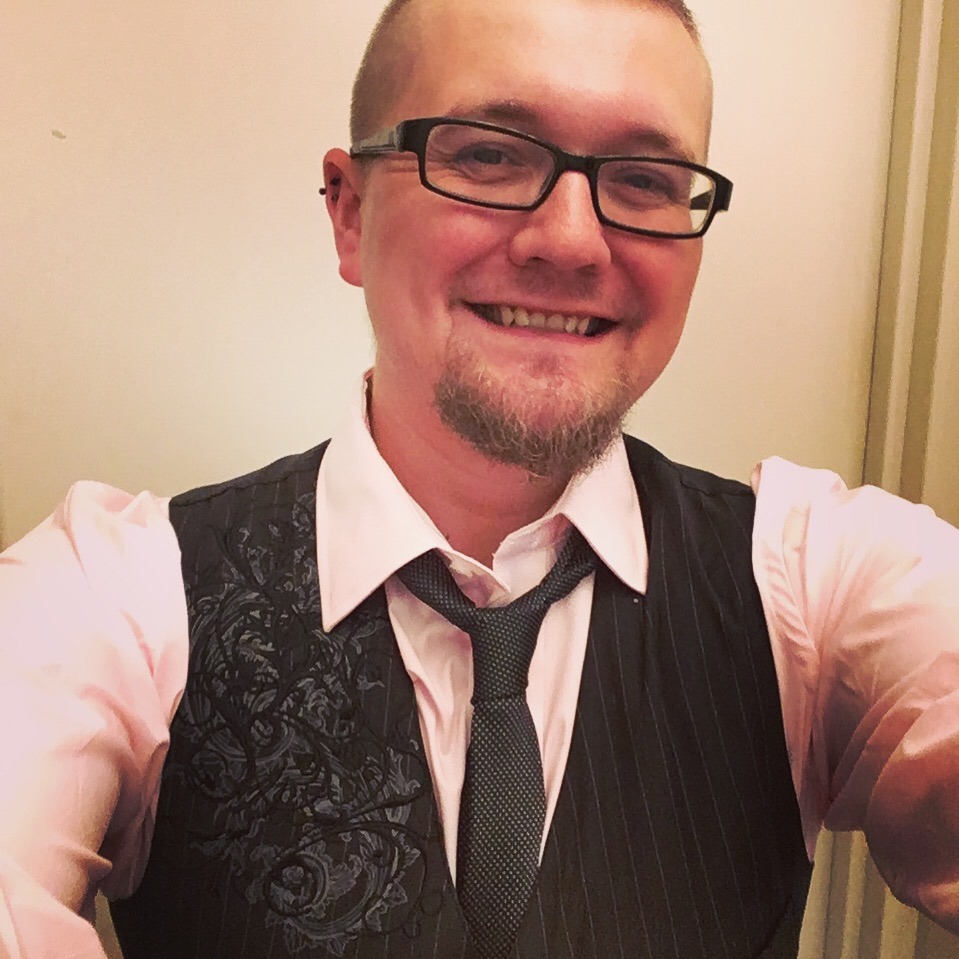Bonhoeffer
An Author Profile

By Gabriel Blanchard
Bonhoeffer united the courage of a martyr with the profundity of a sage.
❧ Full name and titles: the Reverend Doctor Dietrich Bonhoeffer [dē-trĭḥ or dē-trĭk bôn-hĕf-ŕ; see our pronunciation guide for details]
❧ Dates: 4 Feb. 1906-9 Apr. 1945
❧ Areas active: German Empire, later the German Reich (informally called “the Weimar Republic” and, after 1933, “Nazi Germany” or “the Third Reich”)
❧ Original languages of writing: German, Modern English
❧ Exemplary or important works: The Cost of Discipleship; Life Together; Letters and Papers From Prison
Just four weeks before the irrevocable collapse of the Third Reich, a thirty-nine year old Lutheran pastor was executed, after spending more than a year in prisons and concentration camps. A devoted enemy of racism and anti-Semitism, he had been a thorn in the side of the regime from its earliest days, and was accused of knowing about “Operation Valkyrie,” a fruitless attempt by the German military to assassinate Hitler. His name was Dietrich Bonhoeffer.
The sixth of eight children, Bonhoeffer completed his bachelor’s and master’s degrees at the prestigious University of Tübingen in southwestern Germany. He then spent a year in New York at Union Theological Seminary, where he taught while working on postgraduate studies. While there, he became involved with the Abyssinian Baptist Church in Harlem; he connected strongly with the political plight of the Black community, and took note that most white Christians were complacent in the face of segregation and racial injustice. After returning to Germany in 1931, Bonhoeffer carried this conviction with him, saying that Christians must not merely “bandage the victims under the wheel, but jam a spoke in the wheel itself.”
It took particular boldness to say such a thing at that time. Only two years later, the Nazis took power, which was quickly followed by a series of state-rigged elections in churches across the country that placed almost all of them in the hands of clergy sympathetic to Hitler. Working with a number of other prominent pastors, such as Karl Barth and Martin Niemöller, Bonhoeffer organized the Confessing Church. Though only a small minority of Christians in Germany, they resolutely opposed the laws that would have removed pastors of Jewish descent and required clergy to swear oaths of personal loyalty to the dictator. By the mid-thirties, Bonhoeffer was helping to organize international resistance to the Nazification of the German churches, and leading an underground seminary for the Confessing Church.
Your Yes to God demands a brave No to everything that will ever hinder you from serving God alone, whether it be your profession, your property, your house, your honor before the world. Faith means decision.
Dietrich Bonhoeffer
His ultimate martyrdom at the hands of the Third Reich is doubtless what Bonhoeffer is best known for, but his legacy is far more extensive. His theological writings are not particularly systematic—whether because his interests lay elsewhere, or simply because he did not live long enough to do much systematizing. Like Barth, he was an exponent of the neo-orthodox school of theology. Neo-orthodoxy was a reaction against the liberal theology of the nineteenth century, which had mostly downplayed or dismissed the miraculous aspects of Christianity. The neo-orthodox accepted the critical techniques of liberal theology (e.g., questioning and in many cases discarding traditions of who wrote most books of the Bible); but, where liberal theology tended to be influenced by rationalism, neo-orthodoxy had a stronger affinity with existentialism, with its stress on the personal, experiential, and relational aspects of faith and its hostility to authoritarianism in any sphere.
His sermons and writings are strongly Christocentric, and focus particularly on the importance of advocating for the poor and disadvantaged. Bonhoeffer was a pacifist, drawing on the work of Gandhi and influencing King; both the pursuit of social justice and the patient acceptance of suffering were, in his view, the normal form of Christian faith. His “jamming a spoke in the wheel” was not only a slogan, but a program of social, charitable, and political action. In contrast to the “two kingdoms” doctrine typical of the Lutheran tradition—that the church and the state have separate spheres of interest and authority—Bonhoeffer asserted that the union of God and man in the person of Christ broke down this division. Christian life needed to be embodied not only in private religious piety, but in trying to make the world a better place for everyone in it. (He even wrote on occasion of a “religionless Christianity,” though his meaning has been much debated.)
Bonhoeffer’s legacy is a powerful one; his 1937 book The Cost of Discipleship is a celebrated contribution to Christian thought, and a statue in Bonhoeffer’s likeness adorns Westminster Abbey. Though his life, like that of his master, was soon cut short, his teaching remains a touchstone of twentieth-century theology.
Every week, we publish a profile of one of the figures from the CLT author bank. For an introduction to classic authors, see our guest post from Keith Nix, founder of the Veritas School in Richmond, VA.
If you liked this post, take a look at some of our other pieces, like these author profiles of Flannery O’Connor and Mary Wollstonecraft, this “Great Conversation” post on the history of medicine, or this student essay on Aristotelian and biblical ideas about friendship. And be sure to check out our podcast on education and culture, Anchored.
Page image of the entry gate to Auschwitz concentration camp (source).
Gabriel Blanchard is a freelance writer and a staff editor for CLT. He lives in Baltimore, Maryland.
Note: This author was included in a previous version of the Author Bank, but is not present on the current edition (though passages from his work may still appear on CLT exams). A discussion of the latest revisions to the Bank, courtesy of Dr. Angel Adams Parham, can be found here.